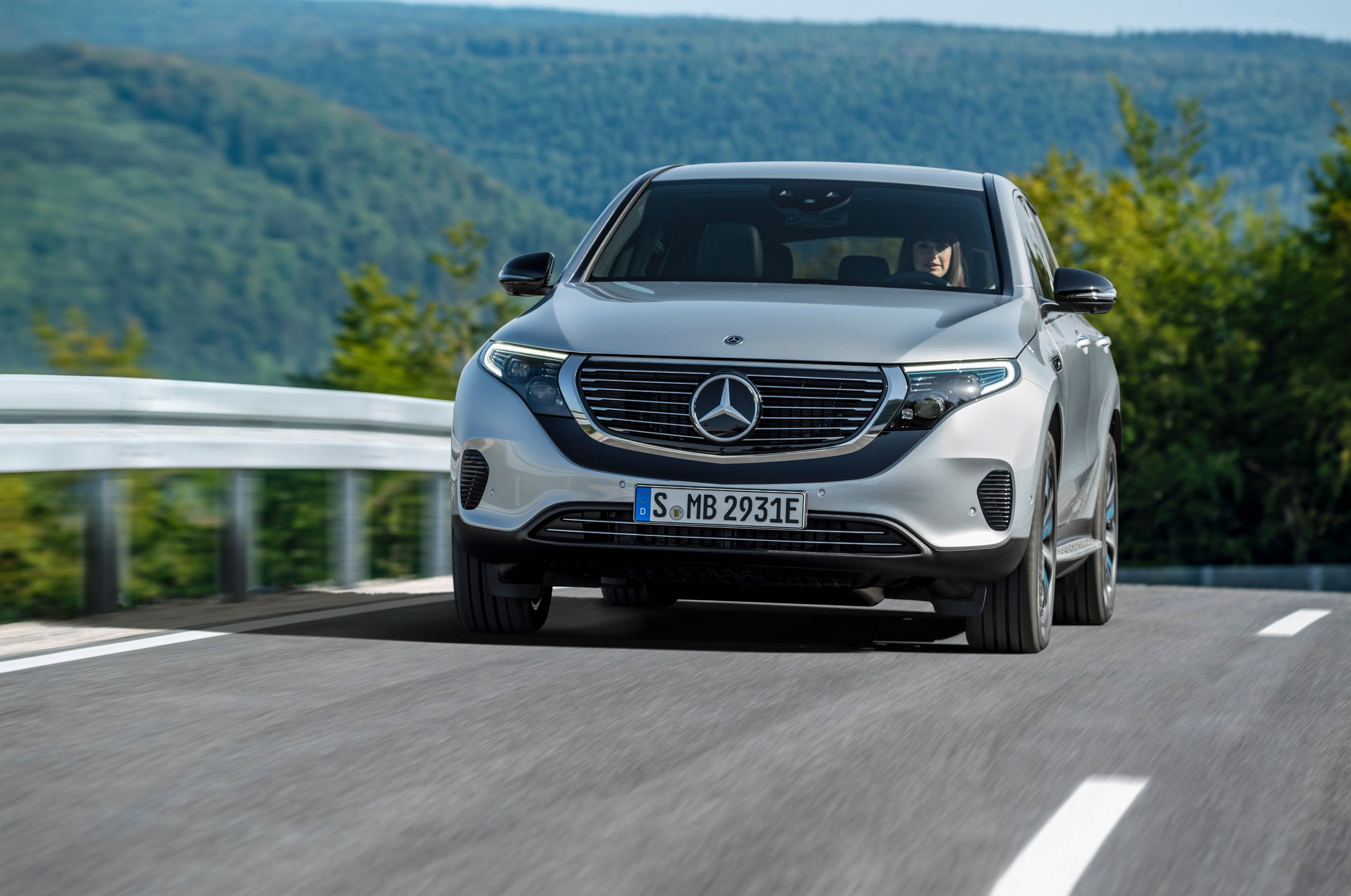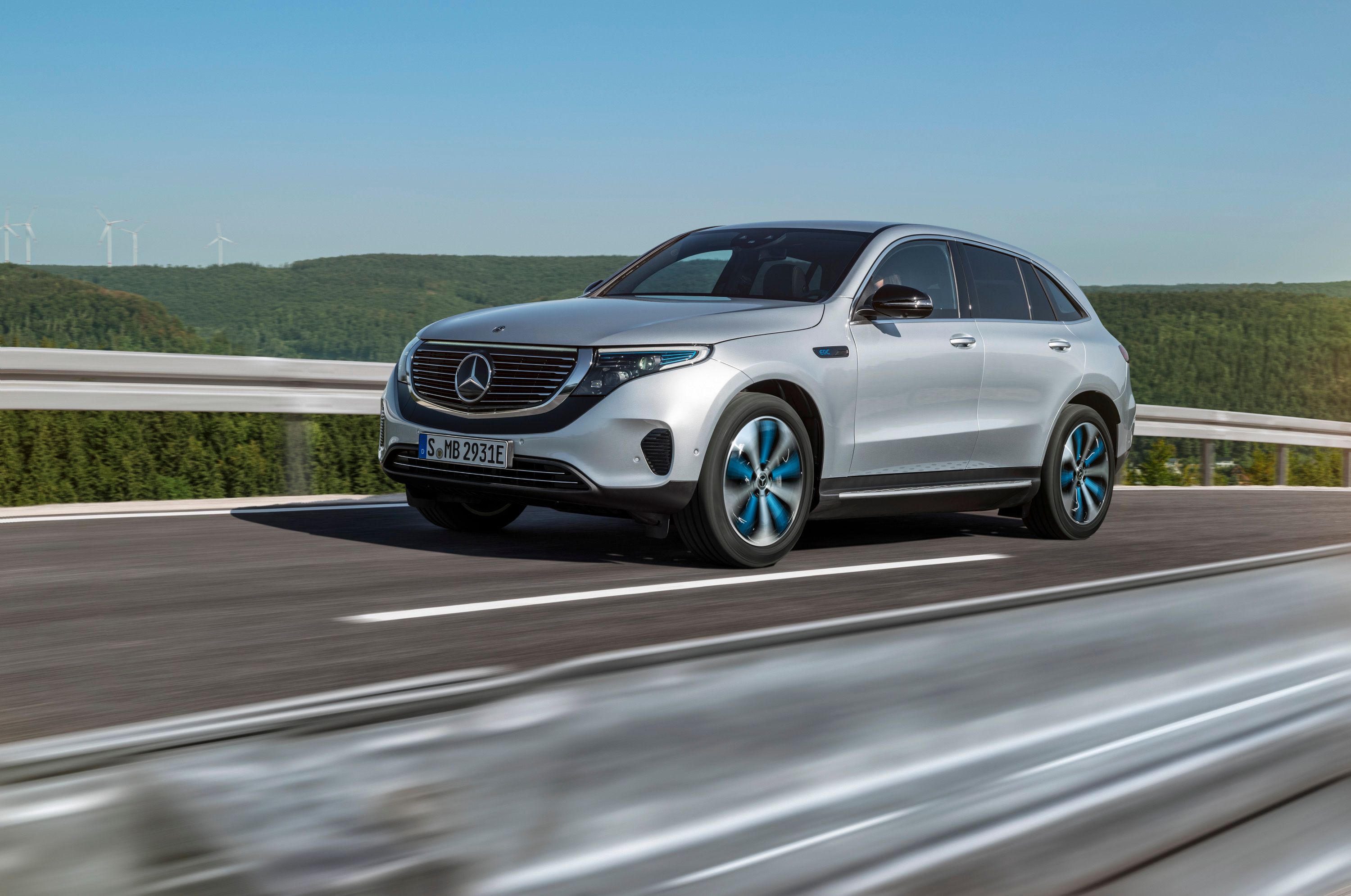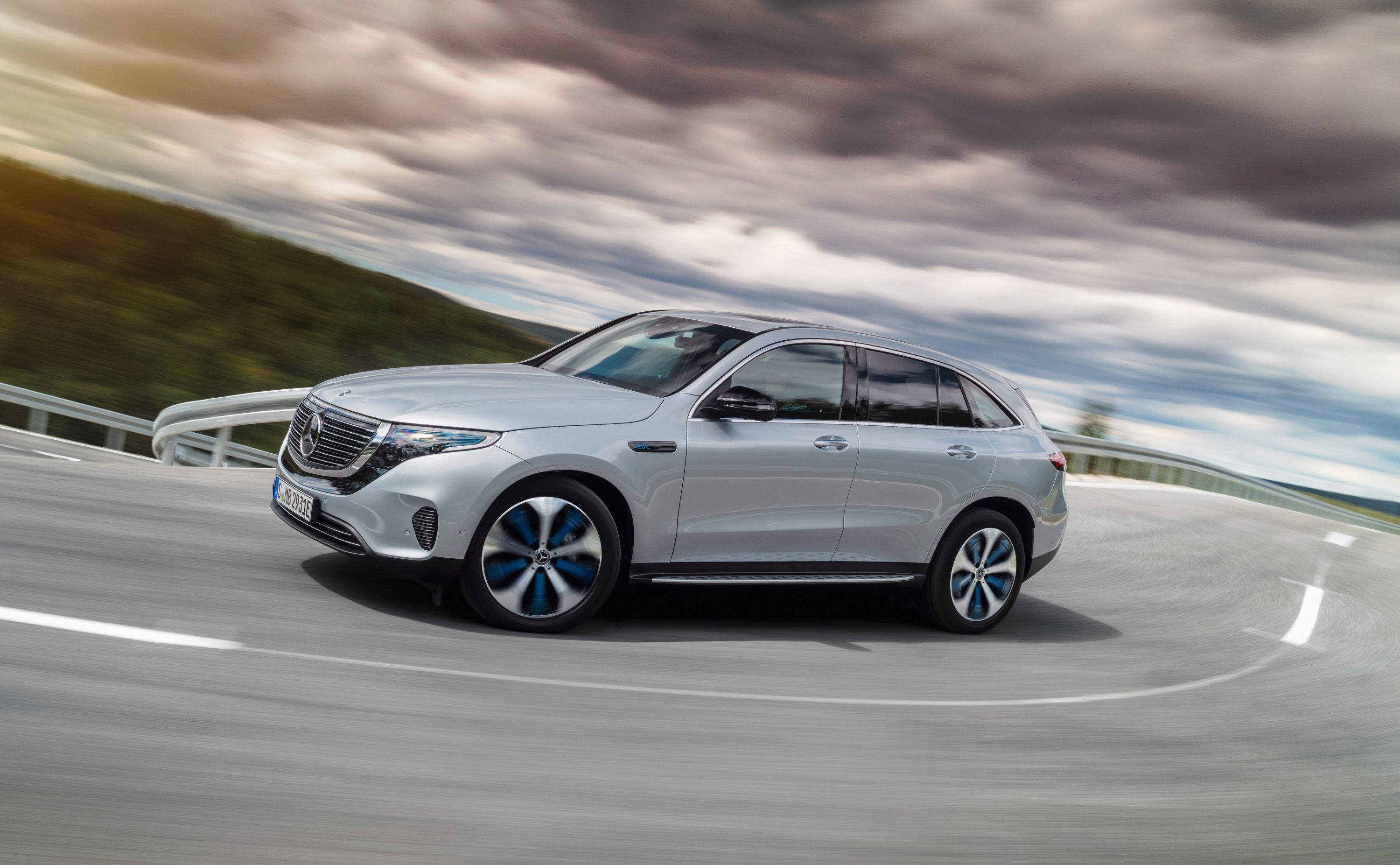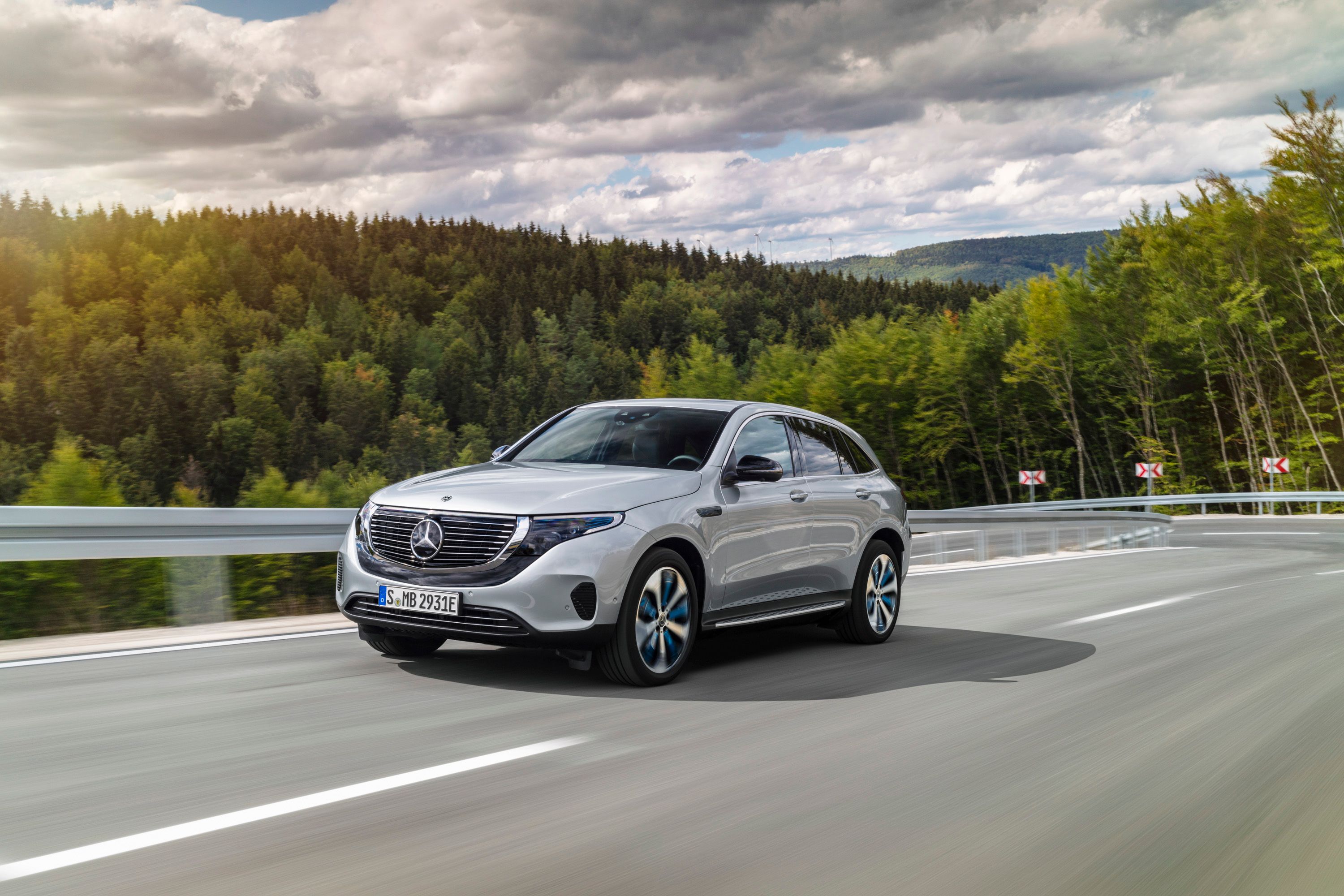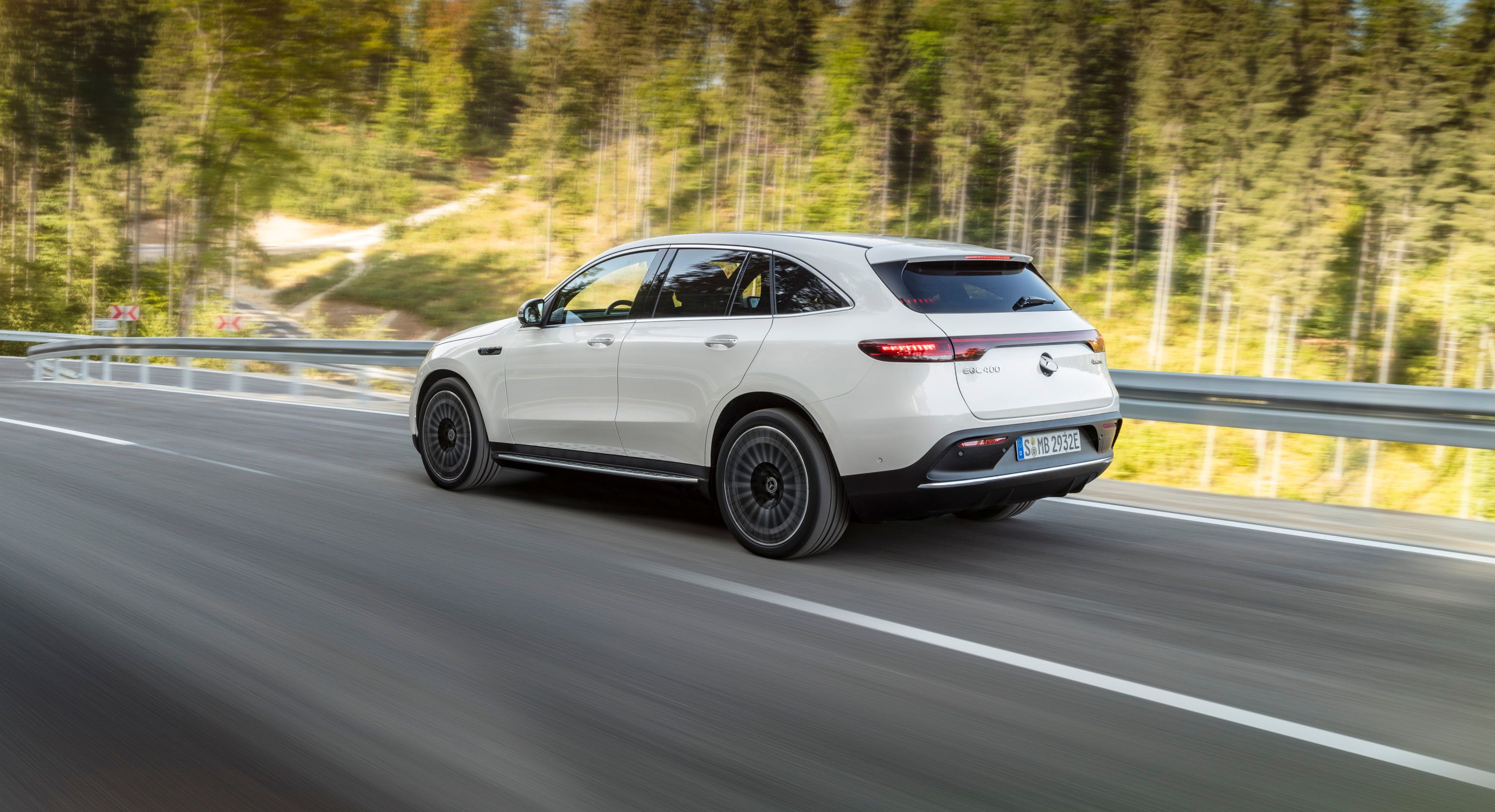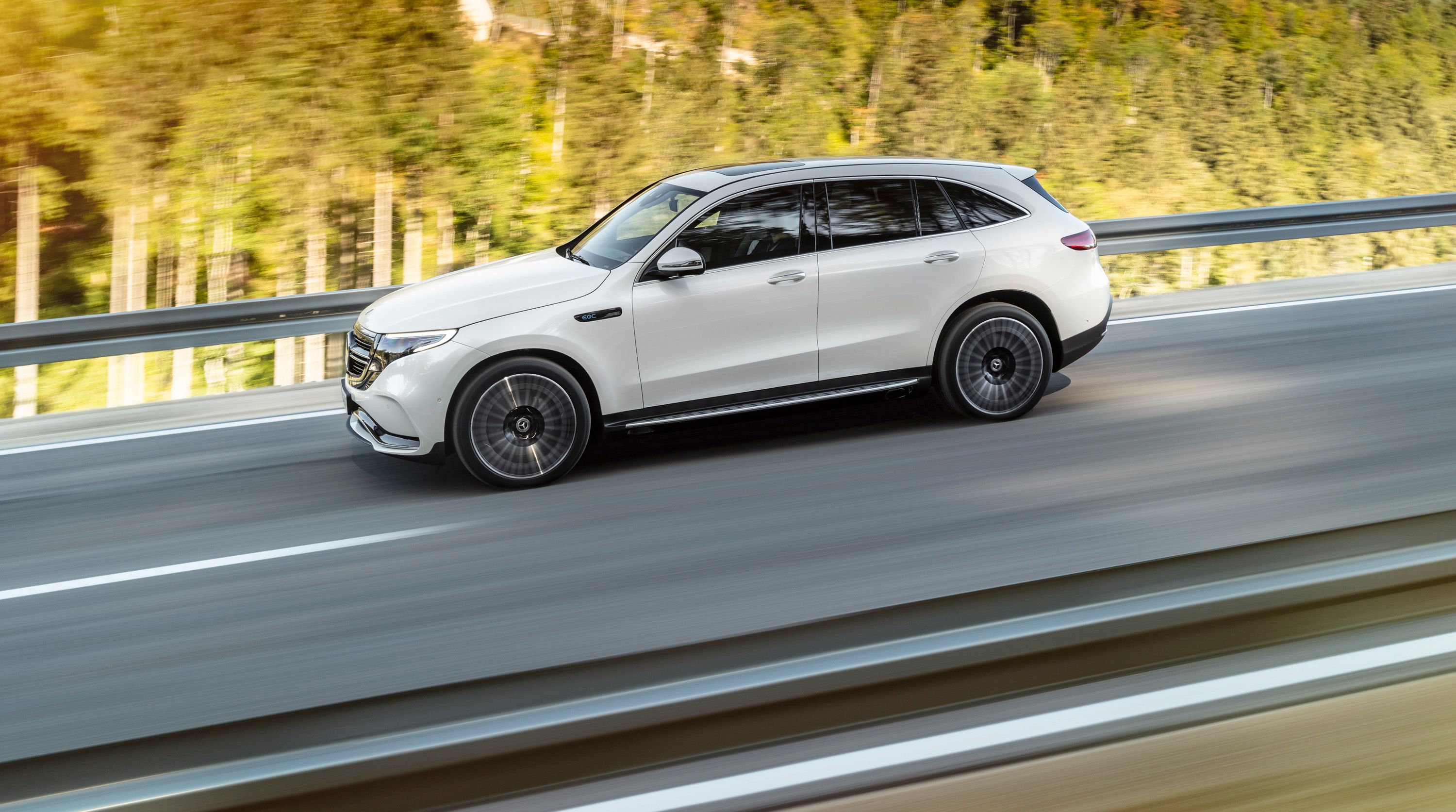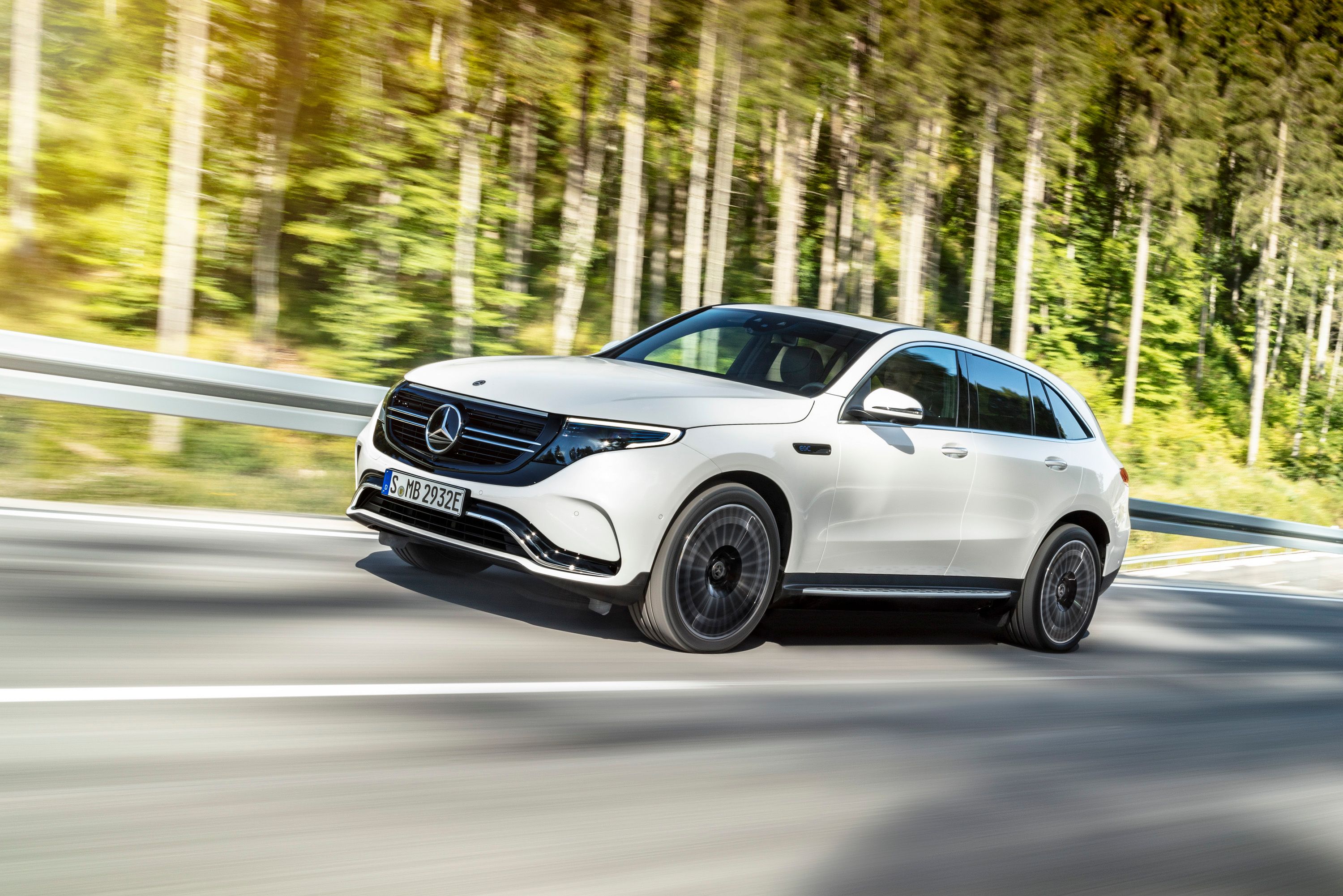After years of rumors, teasers, and concept cars, Mercedes-Benz finally launched the EQ brand. Short for "electric intelligence," EQ made its official debut through the EQC, a compact crossover similar in size to the familiar GLC. It's Mercedes' first all-electric crossover and its second EV after the B-Class Electric. The EQC's introduction is definitely a major event for the German brand, but does it have what it takes to compete against the successful Tesla Model X and the upcoming BMW iX3? It's still early to say, but we already know what we love and hate about it.
Continue reading for the full story.
Ciprian
The interior is equally exciting. It shares most of the cool features and technologies from the conventional Mercs but combines them with unique design cues and new EV-specific tech. Needless to say, Mercedes played it safe here, but it did a good job. Moving over to the drivetrain, the EQC is a solid effort when it comes to its battery and the electric motors. Both are powerful enough for this segment and push the EQC to 60 mph in an impressively fast 4.9 seconds.
On the flipside, I'm disappointed by the car's mileage. Sure, Mercedes has yet to release final figures, but the "around 200 miles" won't change much on EPA's sheet. Granted, it's a solid figure compared to some non-premium EVs, but it's significantly inferior to the competition. The base Model X returns 237 miles, the Jaguar I-Pace delivers 240 miles, while the upcoming BMW iX3 is estimated to offer 249 miles. Unless Mercedes-Benz is planning a more capable version, the EQC will have trouble in keeping up with its rivals.
Kirby
I have mixed feelings about the Mercedes EQC. On the one hand, it’s great that Mercedes has finally joined the all-electric car party. It took the German automaker a while to get here, but the important thing is that it's here.
I’ve been vocal about my disappointment with the crossover’s exterior design. A few days of thinking about it some more hasn’t changed my mind. Granted, it’s not horrible the same way as the Mitsuoka Orichi is horrible. The latter is an assault on the institution of auto design. The EQC, however, looks a little too conservative for my liking. The front section, in particular, falls flat of my expectations. Part of it is, according to Mercedes, is by design. It wants to build up the EQ brand slowly and thoughtfully. Apparently, that strategy came at the expense of the EQC’s aesthetics.
I do agree with Ciprian that the EQC’s interior is one of its best features. It’s hard to take your eyes off the massive digital display, which occupies almost the entire dashboard. Don’t spend too much time staring at it, though, because there are other notable elements about the cabin, including the clean center stack, the comfortable seats, and the ambient lighting. Well done here, Mercedes!
Ultimately, the Mercedes EQC is going to be judged by one thing: range. That’s where it falls flat on its face, at least when you compare it to its rivals. Ciprian already mentioned the competing figures from its rivals, and the fact that the EQC is way behind in this category speaks to how far Mercedes EQ still has to go to become a full-fledged electric brand.
Safet
As the first all-electric Mercedes-Benz, the EQ C entered a strange, almost eerie world of modern electric SUVs. In order to differentiate the EQ C from the other cars in its lineup, Mercedes-Benz reimagined the exterior giving the EQ C a somewhat surprising twist on the sensible looks of the GLC on whose architecture it is based on. The EQ C is longer, neater, but stranger than the GLC.
It is quite hard to pinpoint unlikable features of the EQ C as the car itself is just a neat representation of the new generation of cars. Yet, some things are obvious. While I definitely dig the strangeness all electric cars should bring to the world, the front end of the EQ C could pass with a bit less of it. Strangeness, I mean. Furthermore, the car seems to be considerably more advanced compared with the GLC. It even has an updated interior some parts of which will end up in the facelifted GLC. I would be OK with all of it if I did not find out about the price. The EQ C should start at $70,000. The same as the AMG GLC 63. The EQ C with its two electric motors, 400 horsepower and 249 miles of range (according to WLTP standards), isn't exactly on par performance-wise with it. Does having an electric car priced the same as the AMG one seem like a good proposition to you? It is a hard choice for sure.
So, I find that things like the range, price, and weight (5,300 lbs) may be the biggest deal-breakers for the EQ C. On the other hand, Mercedes-Benz tends to make great cars, and their entry into the world of electric machines is definitely a welcomed one.
Mihai
You’ll be excused if, by now, you’ll have gotten lost in the myriad of Mercedes-Benz three-letter nameplates. The EQC, however, deserves closer inspection than many of the other. It is the German automaker's entry into the growing market of electric SUVs, and it’s at a time when it’s core rivals, BMW and Audi, are planning to release EV SUVs of their own. In this context, it’s no wonder that Mercedes unveiled the EQC although you won’t see it on the streets for another year.
Mercedes say its range will be around 200 miles (the usual 80 or so down from the European system) and the batteries will produce the equivalent to 408 horsepower and 564 pound-feet of torque. That’s plenty, but not enough to worry the Tesla Model X P100d. Most likely, though, Mercedes isn’t aiming at Tesla, for now, instead looking to refine their own product and give it its place on the EV market against its German rivals.
The exterior, especially the front end, is less bland than what the tradition Mercedes SUVs bring to the table but it’s nothing that will blow you out of the water. It does look, in any case, less conservative than I expected it to be in its production guise. Much the same can be said for the interior which must be appreciated for its `Sunnyvale` upholstery, although most of the infotainment is shared.
The trunk isn’t massive and Mercedes can call themselves lucky that, for the time being, the US regulations don’t allow Audi (BMW will only launch the iX3 in 2020) to deploy their full bag of quirks they have in store for the European E-Tron SUV such as laser headlights and cameras instead of old-fashioned rear-view mirrors.
Jonathan
I just finished lambasting the 2020 Mercedes-Benz GLE as boring and predictable in the other Love It or Leave It article we’ve got coming out, ending my blurb by saying that what’ll really grab my attention is when Mercedes finally decides to take a chance and do something ambitious with its SUV line.
Don’t get me wrong; there is a lot I do like about this thing. First, it’s Merc’s first real attempt at the whole all-electric thing, beyond the rather underwhelming B-Class ED, that is. And that’s a good thing - welcome to the party, Mercedes!
It’s also a rather bold new look for the brand, and while I wouldn’t necessarily call it pretty, I’m glad Mercedes is taking some chances. Keep massaging it Merc, and I think you might come up with something quite solid. The interior is also a nice update on what we’ve seen from Mercedes previously, and although it’s far from perfect, I think it’s a step in the right direction.
What’s less impressive, though, is the range. Just 200 miles per charge might have been fine five years ago, but these days, it’s just not gonna cut it.
I can’t overstate just how important range is with an EV. You might have all the speed and luxury and good looks and technology in the world, but if you can’t go the distance, what’s the point? After all, at the end of the day, this thing still has to be a means of transportation, right?
So then, good first effort, Mercedes. Now get cracking on upping those miles.
Further Reading
Read our full review on the 2020 Mercedes-Benz EQC.
Read our full review on the 2016 Mercedes‑Benz "Generation EQ" Concept.


